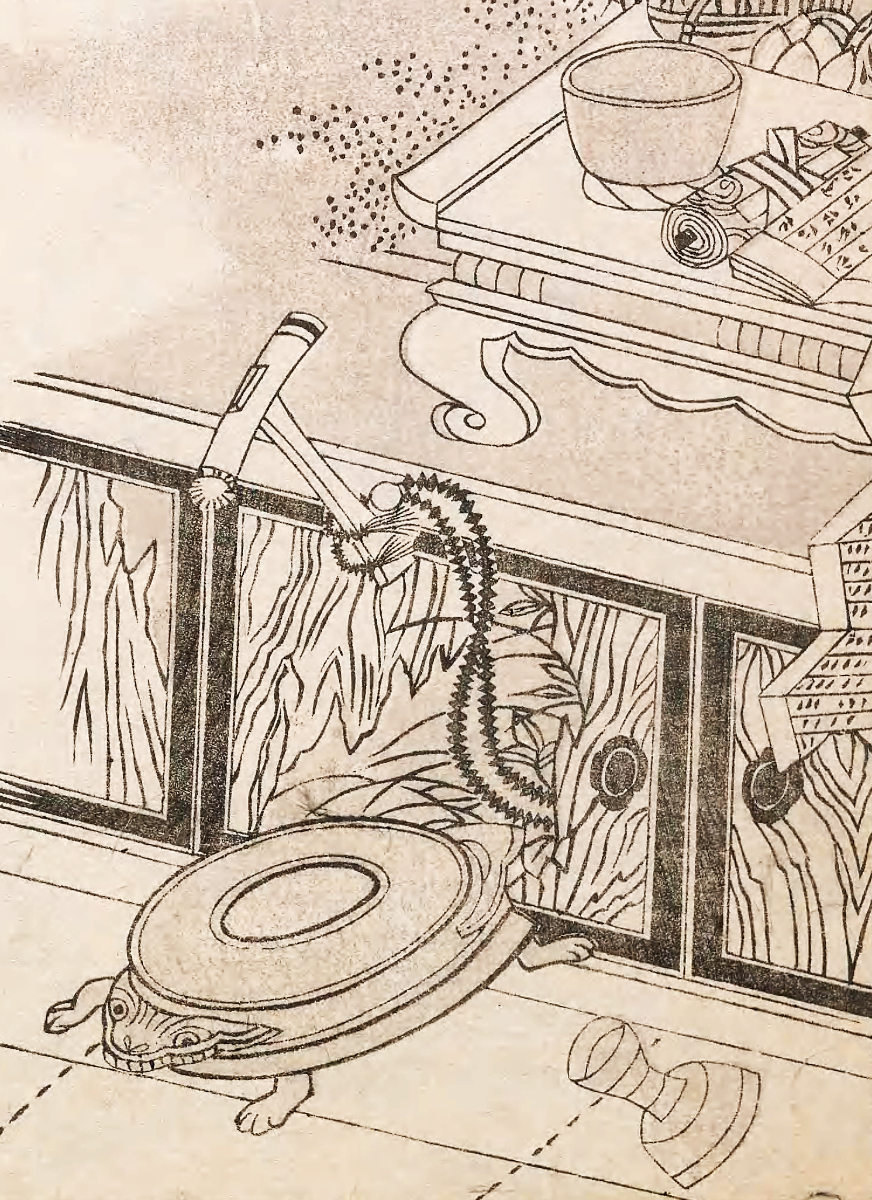A shōgorō is a kind of tsukumogami, a spirit which inhabits a household item. In this case, it is an animated shōgo (鉦吾) — a small, bowl-shaped gong that is struck with a mallet and used in Buddhist services. A shōgo gets a lot of use, being used multiple times every service. It is made of metal, and so can last a long time before breaking. A gong which has long worn out and stopped playing its note pleasantly, and gets put into storage until it is forgotten (or perhaps one is the witness to some horrible crime) is an ideal candidate for awakening into a yokai. Like nay tsukumogami, shōgorō are not dangerous. At most, they are startling, as they wander around at night like some kind of metal turtle, striking their bodies and ringing their notes out into the night. It is enough perhaps to cause loss of sleep, but not much else. The name shogorō is a pun. It is a combination of shōgo, the gong, and gorō, a very common part of a boy’s name. The word can also be read as a combination of shōgo and goryō (御霊), the ghost of a noble or an aristocrat from ages past. Goryō are a grade of ghost above yūrei, and play a large part in many Japanese ghost stories…
| Alias Shōgorō (鉦五郎) |
| Real Names/Alt Names “Gong-goro”, “Ghost gong” |
| Characteristics Yōkai, Enlightenment and Neoclassicism, Japanese |
| Creators/Key Contributors Toriyama Sekien, ○ |
| First Appearance Japanese folklore |
| First Publisher ○ |
| Appearance List Hyakki Tsurezure Bukuro (百器徒然袋, “The Illustrated Bag of One Hundred Random Demons” or “A Horde of Haunted Housewares”, c. 1781) Vol. 1 |
| Sample Read Hyakki Tsurezure Bukuro Vol. 1 (c. 1781) [Smithsonian] |
| Description A shōgorō is a kind of tsukumogami, a spirit which inhabits a household item. In this case, it is an animated shōgo (鉦吾) — a small, bowl-shaped gong that is struck with a mallet and used in Buddhist services. A shōgo gets a lot of use, being used multiple times every service. It is made of metal, and so can last a long time before breaking. A gong which has long worn out and stopped playing its note pleasantly, and gets put into storage until it is forgotten (or perhaps one is the witness to some horrible crime) is an ideal candidate for awakening into a yokai. Like nay tsukumogami, shōgorō are not dangerous. At most, they are startling, as they wander around at night like some kind of metal turtle, striking their bodies and ringing their notes out into the night. It is enough perhaps to cause loss of sleep, but not much else. The name shogorō is a pun. It is a combination of shōgo, the gong, and gorō, a very common part of a boy’s name. The word can also be read as a combination of shōgo and goryō (御霊), the ghost of a noble or an aristocrat from ages past. Goryō are a grade of ghost above yūrei, and play a large part in many Japanese ghost stories… |
| Source Shougorō – Yokai.com |

